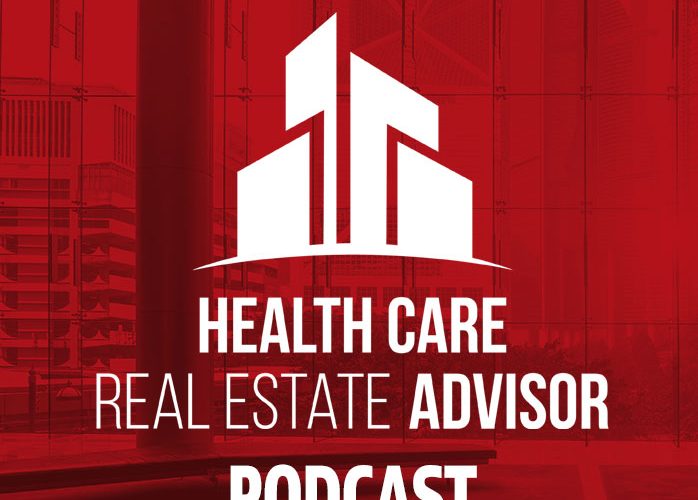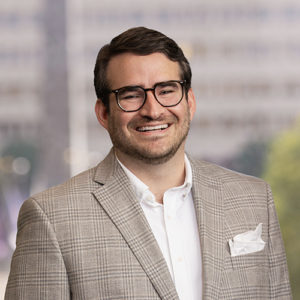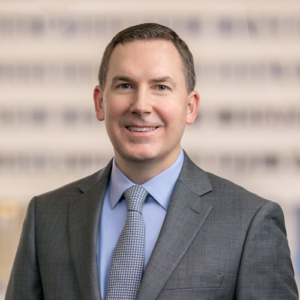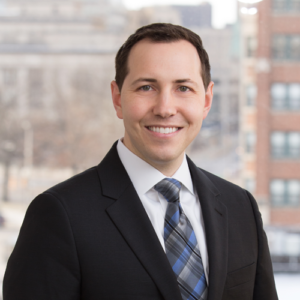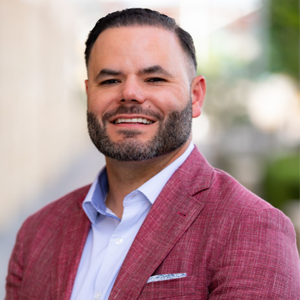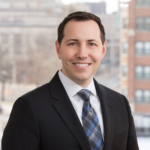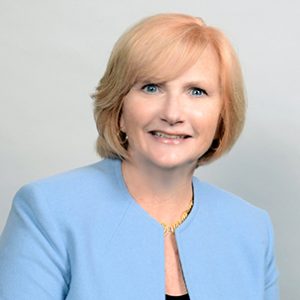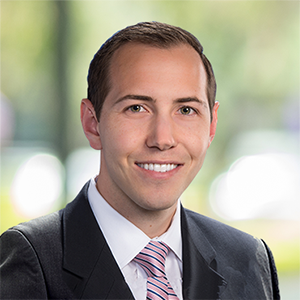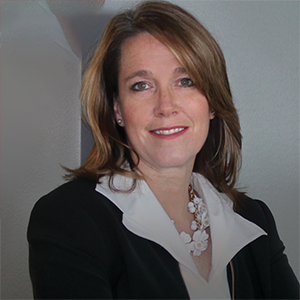From Outpatient Expansion to Value-Based Care: Navigating 2025’s Shifting Health Care Real Estate Landscape
From Outpatient Expansion to Value-Based Care: Navigating 2025’s Shifting Health Care Real Estate Landscape
The health care real estate market is evolving rapidly, shaped by financial pressures, regulatory changes and the continued shift toward outpatient and value-based care models. In this webinar, Hall Render and VMG Health will provide an in-depth analysis of key investment trends, capital-raising strategies and regulatory updates impacting health care real estate in 2025 and beyond.
Podcast Participants

Joel Swider
Attorney, Hall Render
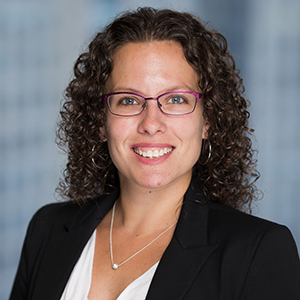
Kristin Herrmann
Director of Real Estate Valuation, VMG Health
Joel Swider: Thanks everybody for joining today. I’m Joel Swider and I’m the co-chair of the Real Estate Service line here at Hall Render. And I, I’m very excited to be joined today by Kristin Herrmann, who is a director of real Estate valuation at VMG Health. So Kristin, thanks for joining.
Kristin Herrmann: Thanks for having me today. Joel VMG is a leading industry leading consulting and valuation firm that specializes in healthcare and works with health systems across the country. We’re licensed in most of the states, and we work all over the country with different types of valuation and consulting. I am specifically in the real estate department for our webinar today. We’re going to focus first on the challenges that are facing healthcare systems in 2025, and then we’re going to move through toward opportunities that we can look forward to. And that’s in 2025. And I’ll pass it over to Joel. Joel, you want to kick us off here?
Joel Swider: Yeah. So what are the challenges? We will walk through a few of them here and then as Kristin noted, give some strategies for how these can be turned into opportunities for our hospital and health system clients. The first one here, and you’ll see if you’re watching this live, we pulled some really great charts and graphs from a variety of sources, and I believe that the slides should be available in the chat as well. But this slide here shows that among nonprofit and governmental, which means really municipal type hospitals, not VA hospitals, margins are really tight. They have been for some time. So this is a struggle, I think across the board. It’s sort of that saying no margin, no mission, right? We see in the for-profit sector, which is a minority of the US hospitals, according to the A HA, they have about a 14% margin, which may or may not be accurate. It sounds high to me, but you can see in the nonprofit and governmental sectors, margins are more like three to four, four and a half percent. So this creates a lot of challenges for hospitals when it comes to real estate. How can you grow and how can you vision for the future when the margins are not there and the patient population continues to be more fragmented and spread out. So this is one challenge.
This slide is a chart from s and P Global that shows, and Moody’s and Fitch data reflect much the same way that as a symptom of these tighter margins in this tighter operating environment that last year downgrades exceeded upgrades. In this case for s and p, it was 49 to 11. Of course, the vast majority of organizations maintained the same rating from year to year. But I think that it is symptomatic that we’ve seen this now for a couple of years in a row, that there’s this divergence between the systems that are doing really well and the systems that are more of a struggle.
The last slide I wanted to present here just to kind of frame up this issue is, and this is from Deloitte, it’s a couple of years old, but it shows that hospitals, that the larger hospitals are growing at a faster rate than smaller hospitals. So that’s both in terms of total number of hospitals just across the board volume as well as revenue growth. And that the larger hospitals, the top 10 health systems saw 82% of the revenue growth during that period. And I would suspect that the data, if they were to be updated today, would probably show much the same because we’ve seen a lot of acceleration in the consolidation within the market. So what does this mean? I think one big takeaway here is that, as I mentioned, there’s going to be a divergence between financing options for real estate for, we’ll call it maybe the haves and have nots. That might be a crude way of putting it, but the systems that are doing really well are going to have a lot of options available to them, which we’ll touch on in a minute. And the systems that are struggling are going to have fewer options yet. I think, Kristin, let me know if you agree, but I think we’re going to see that there are options at each end of that scale and everywhere in between. It just may vary a little bit. Kristin, is this kind of consistent with what you’ve seen?
Kristin Herrmann: Yes. And one thing I’ll note is in 2024, it did seem like we’re having some liquidity open up. There is more competition in terms of financing sources in the market. So that goes along with what you were sharing, Joel.
Joel Swider: So let’s dive into a little bit of the why, right? We framed the issue, but why are health systems experiencing some of these issues, Kristin?
Kristin Herrmann: Well, we can talk about a number of different things. This slide is a great one. From HFMA, it shows that the top cause of margin pressure among health systems is higher labor costs. And a couple years ago we were facing a large issue with temporary staffing, in particular, temporary nursing, travel nursing, et cetera. That was significantly increasing those labor costs. And while that growth in labor costs has come down a little bit, labor costs still are up about 5% year over year. And so this is one of the big causes of margin pressure. Another one is lower reimbursements and reimbursement rates aren’t keeping pace with inflation. So that’s a struggle that we’re facing. Higher supply costs goes along with inflation and increased construction supply costs. There’s a number of reasons and we’ll talk about some other things that we’re facing. Joel, you noted some property tax exemptions that may be in the cross hairs.
Joel Swider: Yeah, so this is a really interesting one. So we’ve seen, and it’s something that Hall render has been tracking for a number of years, but I think it’s really accelerated in recent years, which is a pressure both at the federal level with respect to income tax exemption, and then at the state level when it comes to property tax exemption, an increased scrutiny of nonprofit hospitals in particular. And there’s this sense in which right or wrong, and I think it’s driven by a number of factors, but the sense is that hospitals are not providing the type of charitable benefits that are required to support a property tax exemption. And so example, there are several, but one that is really contentious right now in Indiana is that the legislature is debating whether to have essentially a bright line test where a hospital must provide a certain amount of charity care and community benefits in order to qualify for exemption.
There’s going to be all kinds of issues with that from a constitutional perspective and a case law perspective. But that’s being debated. A number of other states have also had these challenges in recent years. Illinois is a really good example where they had a constitutional challenge to their exemption statute. We’ve seen challenges in Georgia recently and in a couple of other states where not just at the legislature, but also at the judicial level where the local assessors have denied exemptions. And then of course the taxpayer or the nonprofit system would appeal that. And that can is still working its way through the court system. But in many states, the standard is largely the same, even though it’s a state law issue, it’s usually you’ve got to be owned and used for a charitable. And so hospital and health provision of healthcare can be a subset of that charity care, but it’s really, there’s a big divergence in terms of how states treat that issue from a case law perspective. And so I think that many states are watching one another. I don’t know anything about what’s going on back behind the scenes, but I suspect that legislators in Indiana have watched what’s unfolded in Illinois. I suspect that people in Ohio are watching what’s going on in Indiana, et cetera, and other states around the country are watching as well. So I think this is one that’s going to continue to be a challenge this year and in the years ahead.
Kristin Herrmann: And that’s interesting because obviously property taxes have an impact on overall cost for hospitals and health systems. So I think about 75% based on the chart that we showed earlier, about 75% of hospitals are not-for-profit or do not fall in that for-profit category. So there’s a large number of systems that could be experiencing that pain if that property tax exemption were to change significantly. Another item that we noted is impacting health systems in 2025 is an increased number of cyber attacks change. Healthcare is a good example. In 2024, it was the number one biggest ransomware attack last year. The parent company United Health Group estimated that the cost of the response was almost $3 billion. So there’s a huge cost if that were to affect your organization. And it sounds like they’re specifically targeting critical infrastructure like hospitals via phishing or a tax through a third party, which is a concern with any kind of mergers and acquisition activity.
Joel Swider: Yeah, and Kristin, I’ll just add to that. I mean, we’ve assisted a number of systems in recent years with similar attacks, not of that scale, but even local municipal hospitals or small rural hospitals have been hit by these attacks and it’s very costly. How can you afford to take your systems offline for days or weeks at a time, let alone what that does to the quality of care, the level of care, but then longer term, how long does it take to really bounce back from an economic hit like that?
Kristin Herrmann:
Sure, of course, BMG has a cybersecurity team that works directly before, during and after cyber attacks for exactly that purpose helps systems to maintain their defensive posture in the case of any type of cyber attack or surveillance. So I think that’s a big issue for systems this year. I think we’ve touched on this briefly, but staffing shortages, labor costs, that’s a big issue. There’s a supply and demand problem. One stat that I noted is that the average wait time for new patient is 26 days. That’s a long time. So we do know that recruitment and retention of clinicians, physicians, staff, nursing is a challenge. Plus I did see that about 20% of the clinical workforce is age 65 or older, which means that we’re going to start seeing a significant number of those physicians start to enter into retirement. So as labor costs go up, we’re also noting, as Joel forwarded to the next slide, construction costs are also going up significantly since February of 2020.
It was noted that construction costs of increased about 40%, which is a gigantic increase in five years, that’s close to 10% annually. And as those have started to level out, 2024 costs has started to show some signs of stabilizing. We can see from this chart from JLL that there is a thought that in 2025, those costs almost across the board are going to keep inflating and probably not at anywhere near the same level as you can see as we hit in 2021 or two. But with the uncertainty around tariffs and potential construction labor shortage, we may see some prices increasing for goods for labor. And so that’s a concern. Along with that, as with construction, you look at how much is it going to cost to build a building, how much is it going to cost to operate a building? So we’re seeing interest rates also going up.
They were at record lows for about 10 plus years up until 2021 where they were averaging below 3%. If you got locked in a mortgage in 2021, you were probably pretty happy. But they’ve kind of stayed sticky. They’ve come up and they’ve kind of stayed up around that six and three quarters mark. And even with the Fed lowering the federal funds rate three times last year for a total of a hundred basis points, those rates haven’t moved all that much. There is a market expectation that in the second half of the year, those rates might start moving down a little bit, which would hopefully loosen up the market some leading to more activity in the market, making some more deals pencil out, so more investment activity, more liquidity, more competition. And we also noted in CBR E’S survey that more capital is expected to be allocated to that healthcare real estate in 2025. So all of that being said, we are seeing more opportunity in 2025 than we did in 2024 and more activity in 24 than we saw in 2023. And the last thing I’ll note on that point is that investors tend to like healthcare real estate, it’s a less cyclical property type, and tenants tend to be sticky. They like the spaces that they’re in, they don’t want to move, they sign long lease terms and typically want to renew those leases. So all that being said, we see a number of different opportunities. Joel, do you want to
Joel Swider: Yeah, the one thing, sorry, I wanted to show a couple of quick slides because I do think there’s, going back to some of the interest rate that you touched on earlier, we see that there’s potential, at least according to the surveys and data, that we would see some further rate cuts this year, maybe up to 50 or 75 basis points. And I do think that that is going to help some of these deals pencil out that haven’t yet. There’s a lot, I would think a lot of pent up demand in the development sector and just waiting to be deployed given the right circumstance. So I do think things are looking up, and I think as you mentioned, maybe first half of the year, second half of the year, we might start to see a divergence between those two. But overall, I remain optimistic in terms of that. Personally,
Kristin Herrmann: I would agree with that. And the other slide that’s on this page shows the minimum development yield. And the thing to take away from this is that more investors and developers expect those development yields to come down in the sixes than what we have been seeing over the last two years. So with those declining interest rates, we’re likely going to see, assuming declining interest rates, we would likely see some cap rate compression and also some compression in those development yields where it will make that construction and potentially even leasing new construction space a little bit more affordable, assuming construction costs don’t escalate significantly.
Joel Swider: So with that, I think Kristin, we should turn to how does this paint the picture in terms of opportunity for hospitals and health providers in general, or I should say the health sector in general, but I think with a focus on hospital and healthcare systems, one of the big ones that I see as kind of a bright spot, and you can see in this data, this graphic that Kaufman Hall put together, is that hospital m and a has been on the rebound ever since Covid the past three or four years in a row. The m and a volume among hospitals has continued to increase. What’s interesting is as we’ve seen this sort of, and we mentioned it earlier, this sort of divergence between the entities that are able to capitalize in this particular market and the entities that are sort of exiting, hopefully strategically exiting the market.
And so there’s sort of this dichotomy where you have financially distressed hospitals on the one hand that are having to exit markets, and then you see stable organizations that are seeking new capabilities and new resources for future growth. Just a couple of examples that were in the news. I saw Ascension recently was able to improve its operating income by strategically divesting itself of some of its hospitals and JVs. For example, Alabama, New York, spinning off part of Michigan and divesting the Illinois market I believe this past week as well. But then you see other health systems that are really in acquisition mode, Orlando Health, Novant, Kaiser, uc, Irvine, common Spirit Prime, you mentioned HCA and others. So I think that we’re going to see again, sort of a strategic dichotomy in terms of who’s doing what and why. And I think that overall, I think that that does bode well for healthcare real estate over the course of this year and into next year.
One interesting statistic I saw recently was that hospital m and a is up about 33% year over year. There were 20 transactions just in the first quarter of 24, including as you recall, some of those mega mergers last year with Jefferson Health and Lehigh Valley Health was a $14 billion deal and 30 hospitals, the Northwell Novant deal involved 28 hospitals, uc, Irvine and tenant, and a Novant tenant deal as well. So I think those, they bode well as we enter into 25. And I think the other statistic or the other thing to watch is private equity is remaining active, but regulatory scrutiny has been increasing in a number of states. And so we saw the states in which Steward Health operates in particular, and then we saw the prospect medical bankruptcy earlier this year in California largely affected that those states that have been recently burned, if you will, by some of the private equity, sort of the downside of that, have been increasingly regulating private equity investment.
So I do think there’s a challenge there, but there’s also an opportunity whether that means entering into a new market and using a private equity as a capital tool or whether it means potentially divesting from a market or getting involved in lobbying, which I know we’re going to kind of touch on in a minute when we get to the state specific issues. But that’s another one that I think is big and will be over the course of the year. I guess. Let me pause there. Kristin, what are you seeing on your side in terms of the m and a?
Kristin Herrmann: Sure. I do think that some players are looking to expand geographically with those acquisitions and or divest geographically. We’re seeing some hospitals decide to focus their attention in certain areas and divest of other locations that are kind of more ancillary to their system. And you’re also seeing some hospitals expand geographically into an area where they otherwise Hadn hadn’t touched. Another thing that we’re seeing is there is a staffing shortage with that acquisition can come an acquisition of the physicians that are associated with that hospital. So there is a benefit there as well that you could see. Another thing I’ll note is urgent care. One of the things I’m noting is an increase in urgent care acquisitions and other larger package deals where if you’re looking to expand geographically, perhaps buying a large portfolio of surgery centers, there are operating certain number of surgery centers in this geographic area, you want to expand to that area. You have an acquisition of that property type, but hospital specific, I do think physicians, that’s something to note. And also when you talk about federal scrutiny, Joel, are you talking specific to federal scrutiny on private equity or activity in general? Do you think the scrutiny is going to increase in 2025 or kind of remain steady, or do you think there might be some decrease in scrutiny with the new administration?
Joel Swider: That’s a great question, Kristin. I think it’s really interesting because we’re seeing at the federal level this sort of doge really hands-off kind of deregulatory environment. At least that’s the spirit. Now, whether or not they’re able to accomplish that remains to be seen. But I think well, and we’ve seen as well with the new FTC chair that even though the rhetoric is, hey, we’re going to take a little bit of an easier stance towards some of these big m and a deals. Already this year we’ve seen the FT C challenge, a big healthcare merger. I believe it was like a 600 million device deal, and I don’t remember the names of the parties offhand, but it shows that there is still the scrutiny’s out there at the federal level. I think the states are maybe a different story because the scrutiny is maybe more tied to things like CON and CON reform, and there are some state level antitrust and similar regulations that have been imposed recently.
I don’t know whether those will get rolled back in this environment or not, but certainly I think the tools are there. I think it’s a question of in the political environment, who is willing to wield them and in what direction are they going to do that? So I think overall, I think the deregulatory environment that we’re in is probably going to lead to increased investment in healthcare real estate. But again, those dangers do lurk out there. So one other thing Kristin and I wanted to mention while we’re on the topic of m and a is that, again, going back maybe to this divergence in terms of the fortunes of different sized health systems, we’ve seen a lot in the past year or so of monetizations to free up capital for other investment. And I think what we’ve seen and what we will continue to see is that the health systems that have investment grade credit are really going to be in the driver’s seat when it comes to securing attractive financing for new projects.
They’re able to access attractive bond financing. They could do a CTL credit tenant lease financing, or they could go the traditional conventional mortgage debt route. But health providers on the with lower credit ratings will maybe have fewer options, but there are still options. And so they may be seeking out more traditional financing solutions. They may be seeking to sell, like we’re talking about, they may be using high yield bonds or some kind of a developer led or LED solution. So I do think that there’s a real opportunity for us who work in this sector to provide guidance to our clients in terms of what are the options and where along that spectrum do they fall. So that kind of excites me as somebody working in this space is to come alongside a client and say, yeah, here’s sort of a horizon of options. And so I do think that that’s going to be an opportunity this year as well.
Kristin Herrmann: Absolutely. And the monetization of properties, that’s something that we’re seeing hospitals and health systems take a look at and how can I sell this a hundred percent occupied building? What’s the best strategy here? And so if you’re going to do a sell leaseback, what we’re hearing investors are looking for is a hundred percent absolute not or triple net lease, long lease term, 10 plus years, two and a half percent escalations. And we’re seeing systems divest of really high quality buildings, mostly off campus and non-core markets. So you have a nice large class, a medical office or medical outpatient building and an area that’s not vital to your core strategy, and that’s a good way to kind of help ease some of that margin pressure.
Joel Swider: Well, Kristin, what are the types of buildings that are being constructed or what are we foreseeing over the course of this year? Could you touch on that?
Kristin Herrmann: Sure. I mean, one of the things I’ll say is we’re seeing a huge move toward the outpatient, and that’s been kind continuing over the last several years. There’s a big migration of high acuity cases out of the hospital, and we’re seeing that right here in this acquisition criteria. The number one healthcare asset that people are looking to purchase is that medical outpatient building, ambulatory surgery centers follow, and those are very desirable product types. And we can also see that anticipated investment volume in 20 25, 70 2% of people that participated in the CBRE survey stated that they would be expecting more activity, more investment volume than 2024. So that goes along with these sale leasebacks. There’s a lot of people out there that have an appetite for that, and there’s a lot of different types of buildings constructed, but you can take a look at this chart for the most desirable properties to sell it.
A little bit goes hand in hand with that loops nicely into discussion about what are people building to your original question people are looking to build, whether it’s new construction renovation, adaptive reuse. We talked earlier about how construction costs are through the roof. That is leading people to get creative and be a little bit more flexible in what are you going to be able to do. So I’ve seen everything from a freestanding surgery center being retrofit into an old Rite Aid freestanding care emergency room retrofit into same type of box, an office building that is retrofit for medical office use. But we’re also seeing expansions if you can expand a current property, add in some square footage without completely building a new property, that’s going to save some cost there. So those are some of the different types of properties that I would note along with that.
New construction rents, because of those construction costs and those higher development yields, those rents could be 40% or more higher than existing rents. So that is motivating some systems and some individuals to look at renovation or expansion or adaptive reuse as opposed to new construction. And fewer new construction buildings in general are being developed to medical office buildings. The occupancy is 93% right now. It’s continually gone up because fewer buildings are proposed to be built. That being said, as we talked about earlier, we might see an increase in construction in 2025 if those development yields come down, if the construction costs remain more or less tied to inflation as opposed to the much more inflationary construction cost environment that we are seeing in 2021 and 2022. But this is a good chart, Joel, about the projected volume growth. As you can see, the majority, 11% growth is expected in the outpatient space where only 1% growth over the next five years is expected in the inpatient space. And some of the reasons for that is if we’ve got an aging population, baby boomer population is starting to enter that phase, A lot of people aren’t necessarily wanting to go to the on-campus property anymore. A lot of people understand that it’s more expensive to go there, it’s not necessarily located in their community. So there is a reach tendrils kind of going out into the community looking for the rooftops, the new rooftops. You’re seeing a lot of construction around those. Sorry, Joel, I think you had something you wanted to add
Joel Swider: Here. No, yeah, I was just going to echo the sentiment in terms of not just this movement toward outpatient, but also where just as you mentioned, where are people getting care and it’s becoming much more community based, not as much hospital campus based, although that’s still a cornerstone of the strategy, I think for many health systems. But I think that’s a great point. And the other thing I was going to add is that I read a statistic the other day that more than 80% of surgeries in the US are now performed in the outpatient setting. So ASCs are really, to the extent they’re not already are becoming and are central to the overall health system strategy. I think I saw something like seven out of 10 hospitals intend to continue investing and affiliating with ASCs this year and where hospitals are involved in that A SC, the hospitals prefer to have at least a 50% ownership stake in the A SC.
So what does that mean? I mean, I think in many cases it means there’s opportunity in terms of capital. I think the hospital wants to be the majority member for a number of reasons, but in some cases they want to control, they want to control the real estate. The other thing that I saw was that there’s about a 5.4% annual growth projected in ambulatory services. And that includes not just ASCs but also freestanding eds, specialty surgical and then primary care. And so I think that’s going to continue in the year ahead to be a strong strategy for those health systems that are in the position to take advantage of that.
Kristin Herrmann: Yeah, I’d agree. And that kind of goes along the same lines as the move toward value-based care from fee for service. So that value-based care, the goal is really to bring together those community-based health systems and a network of care providers get out into the community and be more patient-centric.
Joel Swider: Yeah. Well, I’m glad you mentioned that, Kristin, because I had the opportunity recently on a podcast to speak with a national developer of value-based care sites, essentially FQHCs and PACE facilities largely, and we’ve seen this on a small scale, we’ve seen it on a national scale where this value-based care not only on the clinical side but then on the reimbursement and on the investment side has been growing. And I think it’s one that’s going to continue growing because the reimbursement is there if a system can figure out how to take advantage of it, and it’s something that’s really good for the community. Many of these, the patients that go to these FQHCs or PACE facilities are oftentimes dual eligible, their Medicare and Medicaid, and so they can be located in a more urban setting where there’s a higher acuity of need and can make those projects pencil out in a way that maybe it wouldn’t work as well in the suburbs. So it’s kind of a unique investment opportunity in particular as you think about nonprofit and charitable hospitals wanting to obviously stick to their knitting in terms of their mission. To me, this seems like a good way to do it.
I wanted to show this slide, Kristin, that you sent me I thought was really interesting because it deals with how the configuration and use of real estate in the healthcare industry really contributes in a big way to staff satisfaction. I think there’s been this concept of the triple aim over the course of time and now it’s expanded to the quadruple aim and with the fourth prong being really satisfaction among the staff and physicians and others. And so this chart is really interesting. It talks about people who are healthcare workers considering leaving their jobs, why, what are the rationales? In many cases, I don’t feel that this environment contributes to my wellbeing. I do or don’t feel that this space is designed in a way that I can conduct my work efficiently. I don’t have sufficient sound privacy or break rooms to recharge. All of these are really integral when you talk about value-based care because you’re dealing with, in many cases, a capitated system where the payer is giving the provider a certain amount of money to work with and they have to make very good and efficient use of that money.
And so if they’re constantly dealing with staff turnover, you mentioned the labor shortages earlier, Kristin, it makes it very difficult for them to operate these facilities in a profitable way or with a margin. I thought this graphic that VMG put out was also really interesting because it really deals with the direct correlation between how facilities design and construction deals with workforce retention. And a couple of the strategies that are noted here are leveraging technology in the building and then implementing other workforce retention programs that really are designed from the ground up both literally and figuratively. So I think that’s going to be a really interesting one to watch. I don’t know if others on the call were watching the NT Health announcement. This came in 2023 and Rise Health, the model as I understand it essentially is kind of a consortium of back office functions of things like reimbursement and other functions are that are centralized and that this entity, which is a Kaiser offshoot, will acquire health systems around the country and they’re investing, I forget the number, I want to say it’s like three to 5 billion over the next couple of years, and essentially trying to bring them under one umbrella.
And the goal is, again, we’ll see if they can pull it off, but the goal is that these health systems would have autonomy in the markets where they’re already located, but that they would off source some of their functions to Ryzen and thereby save money through the data and through this sort of centralization. So there was a big acquisition of Geisinger in, I believe that was in early 24, and then also Cone Health later in 2024. And I think Ryzen said they plan to add another four to five health systems over the next couple of years. So something to watch, but I think it’s really a testament to this value-based care concept and trying to make the numbers work both for the providers and also for the community, which obviously for the nonprofit provider is extremely important.
Kristin Herrmann: And that’s a great point. And another thing I’ll note there along with leveraging technology and automation is kind of the intentionality of design of these spaces in 2025. So we’re looking for systems that are looking for an innovative approach like Kaiser is doing with Rise and Health to scale their cost and enhanced patient outcomes, increase efficiency. So along with that, we’re seeing buildings that are designed, there’s a few different, I’d say there’s a few different important qualities that we’re seeing right now. The first one is kind of the arms race to the newest and nicest facilities because you want those patients through the door, the staff, you want your staff to want to work there per the slide that we were looking at before. And right along with that is efficiency. Designing buildings for efficiency to optimize their workflow. We’re hearing of some systems that are using that same building plan in multiple locations or the same floor plan in multiple locations to help save on cost as well.
Another thing that I’ve heard is flexibility in plug and play where you have one provider in there in 2025, you might need to move someone else here in 2026. Can you easily move that space around to accommodate a different type of use? Safety is also a big feature that people are talking about, both safety and sound privacy, safety in terms of sight lines in the facility. Sound privacy is something I’ve heard from multiple individuals just in the course of my work where an older space was not necessarily built for that. And so requests coming into the landlord, can you give us some sound privacy? I can hear everything that’s going on in the room next to me. Another thing that’s very interesting that goes along with leveraging technology is the increase of smart spaces which incorporate some type of digital technology, whether it be a digital whiteboard or AI that’s in the patient room that’s assisting with taking patient notes. I saw an interesting report about Cleveland Clinic kind of going through multiple AI providers and settling on one that’s assisting with administrative functions, assisting with taking notes, and they’re reporting that they’re experiencing. The physicians are experiencing less burnout and more joy, I would assume, more joy in the workspace where they’re able to see and get more face-to-face interaction and have less administrative responsibility.
Joel Swider: I think that’s really interesting, Krista, because I think a couple of years ago, particularly during covid, when we saw the rise of telehealth and that the popularity with both patients and providers, I think there was this sense in which it’s like, well, has healthcare real estate over? Is everyone just going to be seeing the doctor from their couch? And I think what we’ve seen is largely no. I mean, yes, when it’s convenient for sure, but in many cases people will really value having, like you said, a place where there’s sound isolation, a place where there’s a strong internet connection, a place where there’s maybe a nurse or an NP who can help take certain diagnostic measurements while they’re in real time on that call. And that’s a value add that I think nobody even thought about four or five years ago. So I love that you mentioned that. The other thing I was going to say though, do you think that this ties in with the concept you mentioned earlier about cybersecurity and just sort of going to the actual hardware itself and the way that the building is configured as potentially a first step toward preventing a security breach. I mean, does that have any interplay?
Kristin Herrmann: I’m not an expert in that type of the cybersecurity, that portion of it, but I would imagine that if you have the latest and greatest technology, that probably does play a role. That would be a better question for our cybersecurity team to answer how best to wire a building to prevent cyber attacks and give you the most ability to monitor.
Joel Swider: Yeah. Well, it’s a good plug.
Kristin Herrmann: Oh, I did have one thing I wanted to note along telehealth. One that I had noted is potential for increase is remote doctors and nurses that are actually, it is kind of almost a reverse idea of what you traditionally think of as telehealth where the patient is at home and the doctors and nurses are in the facility. It’s more the patient goes into their local facility. A doctor or nurse is maybe at a hospital 20, 30 miles away or further away, and they can remotely call into that ancillary facility and see their patient kind of on a screen where the patients still get seen by a provider in the facility, but they may not be physically present. I found that pretty interesting.
Joel Swider: Well, Kristin, I wanted to touch on a couple of other opportunities that you and I had come up with in preparing for today. And one of them, or I guess a couple of them are really at a state specific level. So we touched on the property tax exemption issue and how that’s been a challenge, but I also see it as an opportunity. And this map shows some of the states in which the, at least based on this CBRE study, that investors are expecting to have the most investment over the next year. And a lot of these markets, not all of them, but many of them are the ones where we’re seeing CON rollbacks and we’re seeing a better tax environment. And I don’t think that there is any surprise there. I think that those are probably directly related, but a lot of times when we think about, I mentioned what’s happening in Indiana at the State House, we think, oh, we’ve got to have a huge lobbying budget or we’ve got to send somebody to DC or to the State House and deal with these issues.
But personally, I don’t know that that is the only way, and in some cases it’s not even the most effective way. I think even when it comes to a smaller rural hospital, for example, without a huge lobbying budget, it is as simple as bringing coffee and donuts to your assessor once a month and chatting with them. Because the fact is many of these when it comes to property taxes and even other things like certificates of need, things like variances or zoning, all of that is carried out at the local level regardless of whether it’s a state law or what have you. So I think none of that has to be costly, but it’s really about being informed of who’s making these determinations and trying to get ahead of them. That’s something that we’ve done throughout the country is try to find either, whether it’s somebody local or at a minimum having a phone call or a face-to-face meeting if you can with that assessor or with that government official who’s going to be reviewing your application and just to let them know what we’re doing.
I think that has gone a long way in terms of getting the result that we were looking for. On the CON side, we’ve been tracking a number of states there, and I’ll mention just a few of them with activity. In the past year, Tennessee passed CON reform in 2024. Georgia passed a law that just took effect earlier in 25. Kentucky and Connecticut have had some legislative activity toward scaling back their CON that died in 24, but likely to be reintroduced this year. Mississippi has current hearings ongoing, DC had a bill just introduced. And then we’ve also seen some judicial challenges of existing CON regulations in states like North Carolina, West Virginia and Iowa. So I think throughout the country there is sort of this spirit toward repealing a lot of these CON regulations, maybe not across the board, maybe there are certain types of facilities that will continue to be regulated, but I think that creates huge opportunities for our clients who are looking to get into markets or who are already in that market and are looking to expand. Particularly when we talk about some of the outpatient settings that you and I just discussed, is that consistent, Kristin to what you’ve seen in terms of the markets that are heating up this year?
Kristin Herrmann: And I’d also note a lot of those markets, I’m looking specifically at a couple of the markets in the Carolinas and Texas, south Florida, those are also hugely expanding markets in terms of population base. So you’re seeing a lot of new rooftops come in. And so along with those new rooftops, you’re seeing a lot of outpatient medical activity because I just know in particular South Florida comes to mind with a lot of new construction facilities. I know of hospitals going in there. So it’s not just even medical outpatient. They’re building new hospitals, all sorts of new types of facilities, freestanding eds. South Florida is definitely a hotbed for that right now. And my own home, Raleigh Durham is on that map, which I’m very happy to see.
Joel Swider: So with our last few minutes, Kristin, I’d love to get into what are you seeing in terms of the particular modalities and sub-sectors within healthcare real estate that you expect to grow and remain active over the course of the year?
Kristin Herrmann: Sure. Well, this chart’s a good way to kick that off. Senior housing is one that definitely has had an increase in volume. Assisted living it looks like in 2025 is an area that JLLs report notes as the biggest investment opportunity over the next 12 months in that space. And 78% of respondents reported that they plan to increase their exposure to seniors housing. That goes along with, there’s a 80 plus age cohort that’s expected to increase by about 36% over the next 10 years as the baby boomers enter that space. So there’s a huge, again, supply and demand is what it’s all about. So there’s a little bit, there’s some lack of supply here and the big demand and is making these spaces pretty valuable. Another thing I’ll note is we’re seeing a lot of joint ventures for ASCs surgery centers. Behavioral inpatient rehab is another one RFS that we’re seeing are very popular right now with surgery centers in particular, we are seeing that a lot of health systems may not have a huge portfolio of surgery centers today, but they’re going to need one to remain competitive. It’s a highly fragmented market, but everyone’s kind of pushing for those high acuity procedures to be performed offsite, off campus, advances in technology, cost efficiency, all of that. It’s kind of pushing that outside of the hospital setting. And another thing I’ll note is behavioral. The behavioral health space, as you can see here, 56% of respondents are considering that as a service line for a joint venture strategy.
There’s a high demand for that and growing. And again, it comes down to a lack of supply. And there is also an emphasis on outpatient in that space, which is driven by favorable reimbursements. Acadia is one that I’d like to note that has reported as of 2024. They had 21 joint ventures for 22 hospitals in 2024. They’d opened about 11 of those and are expecting to open another 11 in the next few years. I’m not sure if any have been open since that reporting date, but I did find that interesting. Is there anything you’d like to note along this line, Joel?
Joel Swider: I think the behavioral health, well, both the joint ventures and in particular in the behavioral health space is something that we’ve seen on the rise with our clients as well. And also addiction treatment centers. I think it has been on the rise. I saw an interesting report, I think Colliers had put out a couple of months back that showed there were something like 700 some behavioral health facilities throughout the country, but a large percentage of those are outdated and need upgrades. And as you mentioned, it’s hard to bring a new behavioral health hospital online. So yeah, I think this is an area that is ripe for growth. I do think one of the challenges that we’ve seen and that our clients have seen is with respect to the reimbursement, I think there’s a lot remains to be seen in terms of the direction that CMS is going to take under RFK Junior and whether some of these areas that are really the project would work. But for the reimbursement structure, my hope is that some of that could be sorted out to a level in which that supply can catch up to the demand. But I think you’re absolutely right. I mean, the demand seems to be there and in many cases it’s just hard to make the numbers pencil out to get the project off the ground. So I think that’s a great point.
Kristin Herrmann: Yeah, that’s a really good point, Joel.
Joel Swider: Well, we are at the end of our time and wanted to say thank you, Kristin, particularly for you sharing your thoughts today. And thank you to each of you who tuned in to listen. We will send out our contact information here is listed on this slide, but we will also send out an email with our contact information. I know that there were a couple of questions that I saw come in that we didn’t get a chance to address in the time that we had, and so we’ll reach out individually to those people and if you have other questions that come up afterward, feel free to give us a call or send us an email. We’d love to chat with you. So Kristin, thank you so much for joining.
Kristin Herrmann: Thank you for having me today, Joel. I’ve enjoyed it. Thank you, Joel and Kristin. And thanks to everyone for joining us today.

